Taking care of a Christmas cactus doesn’t have to be daunting! At CARS.EDU.VN, we understand the joy these vibrant plants bring to your home, and we’re here to provide expert guidance on Christmas cactus care. Learn how to nurture your holiday cactus for stunning blooms with our guide, including potting tips and light requirements. Discover the secrets to a flourishing succulent that brightens your space for years to come, along with essential tips for succulent care and indoor plant health.
1. Understanding the Christmas Cactus
The Christmas cactus (Schlumbergera bridgesii), a delightful and easy-to-care-for houseplant, adds a splash of color to winter months. Often called holiday cactus, winter cactus, or crab cactus, this plant is a beloved holiday tradition. Native to Brazil’s tropical rainforests, this unique epiphyte thrives indoors with minimal effort. Its name honors Frédéric Schlumberger, a 19th-century cactus and succulent enthusiast.
There are three main types of holiday cacti: Thanksgiving cactus, Easter cactus, and Christmas cactus. Each offers distinctive characteristics and bloom times. These plants gained popularity for their stunning blooms, ease of care, and ability to thrive indoors. With the right conditions, your Christmas cactus can bring beauty to your home for years to come, and understanding proper plant care is crucial for its longevity.
2. Encouraging Blooms: Flowering Tips for Your Christmas Cactus
Christmas cactus flowers are truly spectacular. Their tubular shape and vibrant colors, including shades of pink, red, white, yellow, and purple, add a festive touch to any space. With proper Christmas cactus care, these blooms typically last for 4-6 weeks, offering a long-lasting display of holiday cheer.
Your Christmas plants bloom approximately 12 weeks after planting under optimal conditions. According to Planet Desert, manipulating light and darkness can help trigger blooming around Christmas time. Ensuring proper care is essential for optimal blooming, whether your cactus is indoors or outdoors.
2.1 Blooming Indoors
To encourage your Christmas plant to bloom indoors, provide the right conditions:
- Bright, Indirect Light: Ensure your plant receives plenty of bright, indirect light during the day. Avoid direct sunlight, which can cause sunburn.
- Uninterrupted Darkness: During the fall, give your cactus a period of uninterrupted darkness for about 12-14 hours each night.
- Moisture Balance: Keep the soil slightly moist but not overly saturated, and avoid overwatering.
2.2 Blooming Outdoors
If you’re growing your Christmas cactus outdoors, consider the following:
- Partial Shade: Place it in a spot with bright, indirect light and some shade during the hottest part of the day.
- Cooler Temperatures: Outdoor cacti benefit from cooler temperatures (around 50°F to 55°F) for about 6-8 weeks in the fall to stimulate bud formation.
- Frost Protection: Protect your cactus from frost and bring it indoors if temperatures drop too low.
3. Step-by-Step Guide to Christmas Cactus Care
Schlumbergera are remarkably easy to care for. As epiphytic plants in their native environments, they grow on trees and absorb moisture from the air. Here’s a step-by-step guide for easy Christmas cactus care:
3.1 Watering Tips & Tricks
Water your Christmas cactus sparingly, allowing the soil to dry out slightly between waterings. Water every 7-10 days in the spring and summer, and every 4-6 weeks in the fall and winter. Unlike most cacti, the Schlumbergera bridgesii requires more watering, but they don’t like to sit in water for a long time.
Aim to water when the top inch of the soil feels dry. Use room temperature water and thoroughly saturate the soil, allowing any excess water to drain away. Avoid overwatering, as it can lead to root rot and other issues. Reduce watering in early fall and mid-October to mimic drier conditions and promote healthy flowering.
3.2 Humidity Preferences
These winter plants appreciate higher humidity levels. You can achieve this by placing a tray filled with water and pebbles beneath the Christmas cactus pot. As the water evaporates, it creates a humid microclimate. Alternatively, mist the leaves occasionally to provide a boost of moisture, being careful not to overdo it.
3.3 Light Requirements
The Christmas cactus thrives in bright, indirect light. It prefers a spot near a window where it can receive plenty of filtered sunlight throughout the day. Direct sunlight can be too intense and may cause sunburn on its leaves. Aim for about 4-6 hours of light per day during the growing season.
During the fall and winter months, the Christmas cactus benefits from shorter daylight hours. Provide around 8-10 hours of darkness at night to encourage blooming. This can be achieved by placing it in a room that’s not illuminated by artificial lights.
4. Distinguishing the 3 Types of Holiday Cactus
As a holiday plant, this hybrid is often mislabeled and confused with other similar cacti by garden centers. The Thanksgiving and Easter cacti are often referred to as types of Christmas cacti because they share similar characteristics and are part of the same genus, Schlumbergera. These holiday plants are known for their ability to bloom zygomorphic flowers (two differently sized petals) around the holiday season, just like the Christmas cactus.
All varieties can be planted indoors until summer, allowing for easy replanting or outdoor relocation. Here are the detailed differences between these:
4.1 Christmas Cactus (Schlumbergera bridgesii)
Many Christmas cacti sold during the holiday season are not real Christmas cacti but rather hybrids of Thanksgiving cacti that are forced to bloom for Christmas. The real Christmas cactus has flattened stems with rounded edges, giving it a distinct appearance. As its name suggests, it blooms during the Christmas season, usually in December.
4.2 Thanksgiving Cactus (Schlumbergera truncata)
The Thanksgiving cactus is the holiday plant that is most likely to be sold as a “Christmas cactus” around the holidays. Growers control the bloom cycle so they can sell the same plant for Thanksgiving and Christmas. The Thanksgiving cactus has pointed, claw-like stem segments, giving it a unique appearance. It typically blooms in late November, just in time for the Thanksgiving holiday.
4.3 Easter Cactus (Rhipsalidopsis gaertneri)
The Easter cactus or Spring cactus has more rounded and scalloped stem segments, setting it apart from the other two types. It typically blooms in the spring, around the Easter holiday, hence its name. Like the Thanksgiving cactus, the Easter cactus also adapts well to indoor environments.
5. Selecting the Best Soil for Your Holiday Cactus
Choosing the right soil for your Christmas cactus plant is crucial. Too much moisture can lead to root and stem rot. Use a specialized cactus potting mix, like the one available at Planet Desert, or create your own potting mix by combining equal portions of perlite, coarse sand, and good natural potting soil.
This organic substrate helps your plants grow a healthy root system. Avoid using heavy garden soil or mixes that retain too much moisture. The cactus can tolerate slightly acidic to slightly alkaline soil, with a pH range of around 5.5 to 7.0.
6. How & When to Fertilize Your Christmas Cactus
Provide your cactus with the right nutrients to support healthy growth and vibrant blooms. Use a balanced, water-soluble fertilizer formulated specifically for Christmas cacti, with an NPK ratio of around 5-10-5. During the active growing season in spring, fertilize your cactus once a year.
Dilute the fertilizer according to the package instructions and apply it to the soil around the base of the plant. Avoid over-fertilizing, as this can lead to salt build-up and damage the roots. Withhold fertilizer or stop fertilizing altogether during the winter. You can also use a diluted solution of compost tea or worm castings to provide natural nutrients.
7. Understanding Hardiness Zone & Temperature Needs
Christmas cactus grows best in a cozy, humid environment without too much light. They thrive in temperatures between 60°F and 70°F during the day, with slightly cooler temperatures at night. If you live in USDA zone 10-12, you can grow cactus outdoors.
In colder regions, grow it indoors or in containers that can be brought indoors during colder months. Christmas cacti can adapt to average indoor humidity levels. However, they appreciate slightly higher humidity. Increase humidity around the plant by misting its leaves with water or placing a tray filled with water and pebbles beneath the pot.
8. Quick Annual Care Schedule for Christmas Cactus
8.1 Spring
- After flowering, fertilize with a balanced houseplant fertilizer to promote healthy new growth.
- If the cactus has outgrown its pot, consider repotting it into a slightly larger container with fresh, well-draining soil.
8.2 Summer
- During the summer months, place the cactus outdoors in a shaded area, protecting it from direct sunlight.
- Water regularly, keeping the soil consistently moist but not soggy, and provide drainage to prevent root rot.
8.3 Fall
- As the days grow shorter, prepare your Christmas plant for blooming by reducing watering and placing it in a cooler room (around 50-55°F) to encourage bud formation.
- Be mindful of temperature changes and avoid exposing the cactus to direct sun or cold drafts.
8.4 Winter
- Place the cactus in a well-lit location with indirect light during the winter months.
- Water sparingly, allowing the top inch of soil to dry out between waterings, and avoid overwatering.
9. Effective Christmas Cactus Pruning Techniques
Pruning your plant is best done after the blooming period, typically in late winter or early spring. Examine the plant and identify any dead, damaged, or overgrown stems. Using clean and sharp pruning shears or scissors, carefully trim these stems back to the base of the plant.
In addition to removing dead or damaged stems, you can also shape your cactus through selective pruning. Pinch off the tips of the stems to stimulate the growth of lateral branches and result in a fuller plant.
10. Propagating a Christmas Cactus
Propagating Christmas cacti is best done during the spring or early summer when the plant is entering its active growth phase. Avoid propagating during its blooming period in late fall or early winter.
10.1 Propagating by Stem Cuttings
- Select a healthy segment of the Christmas cactus stem, around 3-4 segments long.
- Allow the cutting to dry and callus for a few days.
- Prepare a well-draining soil mix by combining equal parts potting soil and perlite or sand.
- Place cuttings in lightly moistened soil, three stems in a 4-inch pot, and five stems in a 6-inch pot, and expect roots to form within two to three weeks.
- Keep the soil lightly moist, but avoid overly wet soil or overwatering.
- Place the Christmas cactus cuttings in a warm and bright location, but avoid direct sunlight.
10.2 Propagating by Seeds
- Start by collecting ripe seeds from the fruit of your Christmas plant.
- Clean the seeds by removing any pulp or debris and allowing them to dry for a few days.
- Prepare a well-draining soil mix by combining equal parts potting soil and perlite or sand.
- Plant the seeds in small pots or seed trays, lightly covering them with a thin layer of soil.
- Keep the soil consistently moist, but not waterlogged by misting it or using a spray bottle.
- Place the pots or trays in a warm and bright location, but avoid direct sunlight.
11. How to Repotting Christmas Cactus Properly
When it comes to repotting your cactus, you don’t have to do it too often. Repotting every 2-3 years is usually sufficient, or when you notice that the current pot is becoming too small for the cactus to thrive. When you do decide to repot, remember to choose a slightly larger pot and use well-draining soil.
Water the plant thoroughly and allow it to adjust to its new pot before resuming its regular care routine. Remember to keep the cactus in a location with bright, indirect light and avoid overwatering to prevent root rot.
12. Overwintering Christmas Cactus for Longevity
Overwintering a Christmas cactus is an important part of its care, especially if you live in a region with cold winters. During the winter months, these cacti appreciate a period of rest and lower temperatures. Place it in a cool room with temperatures around 50-60°F.
It’s important to reduce watering during this time and only water when the soil feels dry. By providing the right conditions, you can help your cactus stay healthy and prepare for another year of beautiful blooms.
13. Identifying and Managing Common Pests & Diseases
There are several pests that can bother our Christmas cacti, such as mealybugs, spider mites, flower thrips, and fungus gnats.
- Mealybugs: Treat them with insecticidal soap or wipe them off with a cotton swab dipped in rubbing alcohol.
- Spider mites: Use a miticide or gently wash the leaves with water to control them.
- Flower thrips: Use insecticidal soap or neem oil to combat them.
- Fungus gnats: Let the soil dry out between waterings and use sticky traps to catch the adult gnats.
Overwatering plants can lead to fungal illnesses. Two prevalent cactus fungi that can cause stem rot are Fusarium and Phytophthora.
14. Simple Tips for Avoiding Problems with Christmas Cactus Health
Here are some points to help you avoid problems with your Christmas cactus’s health:
- Root Rot: Use well-draining soil specifically formulated for cacti. Avoid overwatering and allow the soil to dry out between waterings.
- Distorted Growth: Ensure your cactus is getting the right amount of light. Find a bright spot with indirect light for your cactus.
- Leaves Turning Red or Pink: Maintain consistent light and temperature conditions for your cactus to minimize color variations.
- Yellowing of Leaves and Wilting: Overwatering is often the culprit behind yellowing and wilting leaves. Make sure to let the top inch of soil dry out before watering again.
15. Where Can You Buy a Christmas Cactus
When it comes to buying Christmas cacti, you might be able to find them at a local nursery or garden center in your area that specializes in succulents and cacti. Planet Desert is a great option if you’re seeking the easiest way to get cacti online and have them conveniently shipped right to your door! You can also search online for “Christmas cactus near me” shops or florists that offer Christmas cacti for sale.
16. Growers Reference Guide – Christmas Cactus
| Common Name | Holiday Cactus, Winter Plant, Crab Cactus |
|---|---|
| Botanical Name | Schlumbergera bridgesii |
| Family | Cactaceae |
| Blooming Season | Fall, Winter |
| Flower Color | Pink, red, white, purple, orange |
| Genus | Schlumbergera |
| Growth Habit | Trailing–hanging |
| Growth Rate | Slow |
| Hardiness Zone | 10—11–12 |
| Mature Size | 12 in. tall, 24 in. wide |
| Native Area | Brazil |
| Plant Type | Perennial cactus |
| Propagation | By stem cuttings |
| Resistance | Drought tolerant, Pest resistant, Heat tolerant |
| Soil PH | 6.5, Acidic, Neutral |
| Soil Type | Cactus Soil Mix |
| Special Features | Showy Blooms |
| Sun Exposure | Full sun, partial shade |
| Toxicity | Safe for Humans, Friendly to dogs, Friendly to cats |
| Watering Needs | Moderate |
| Dormancy | Winter |
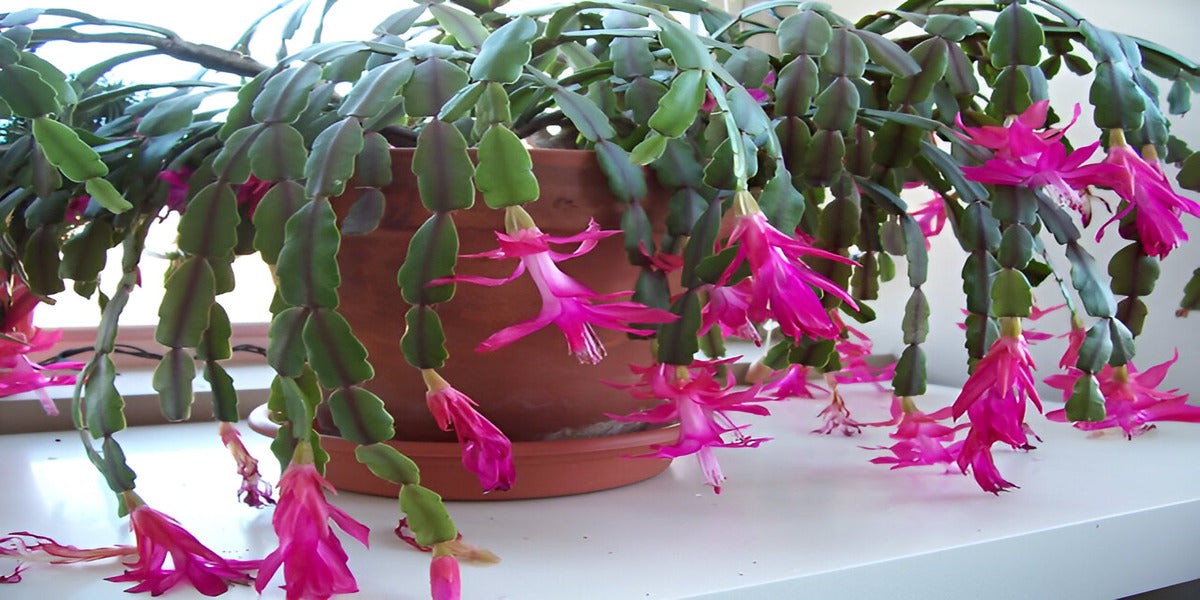
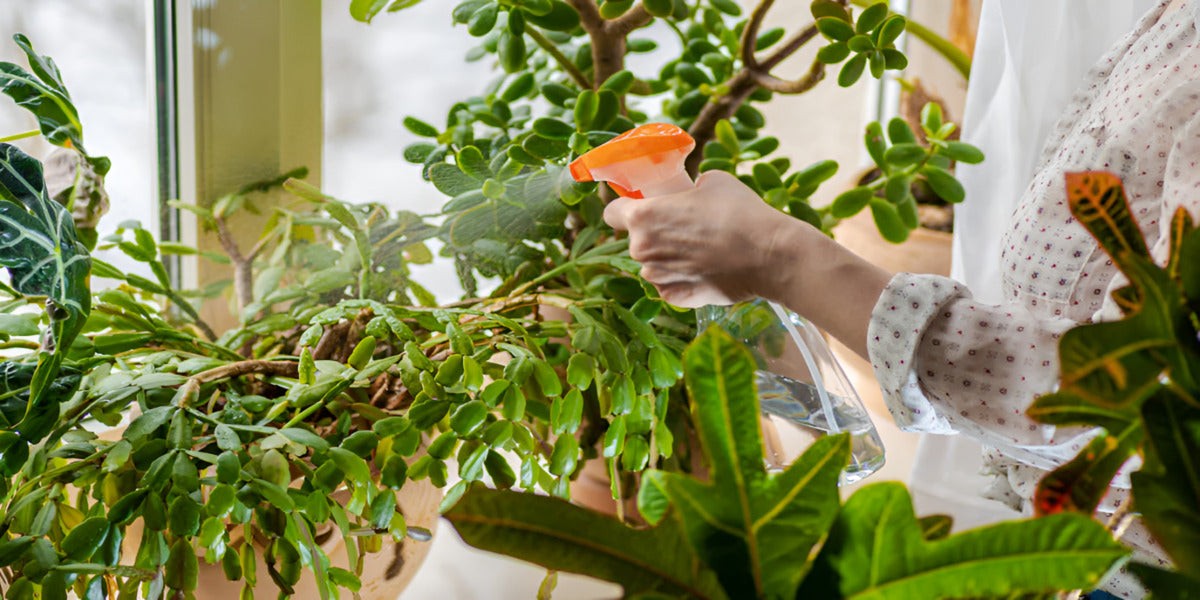
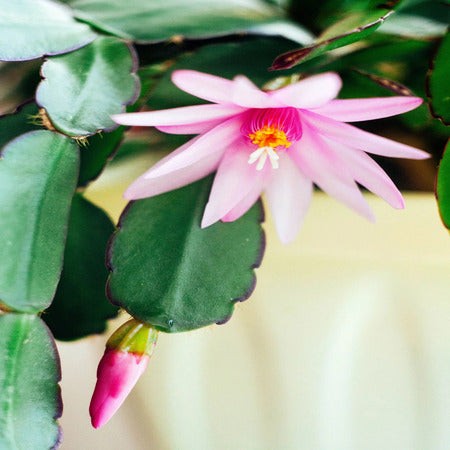
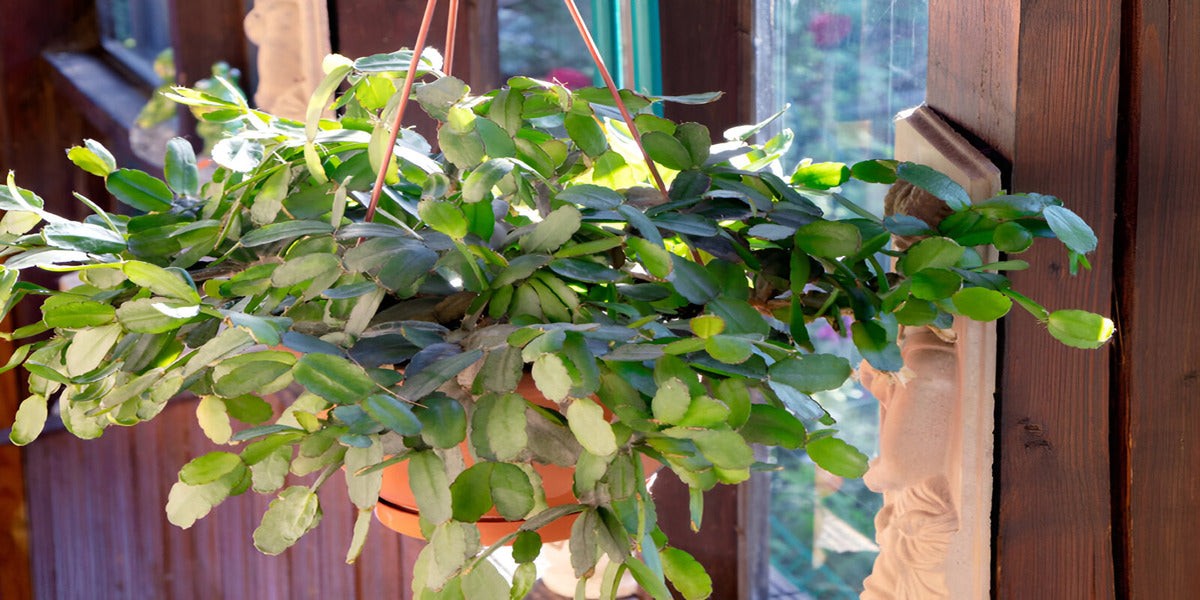
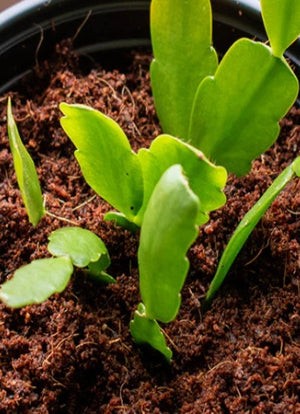
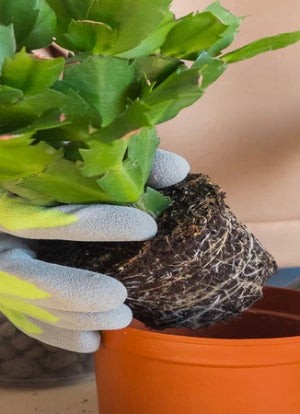
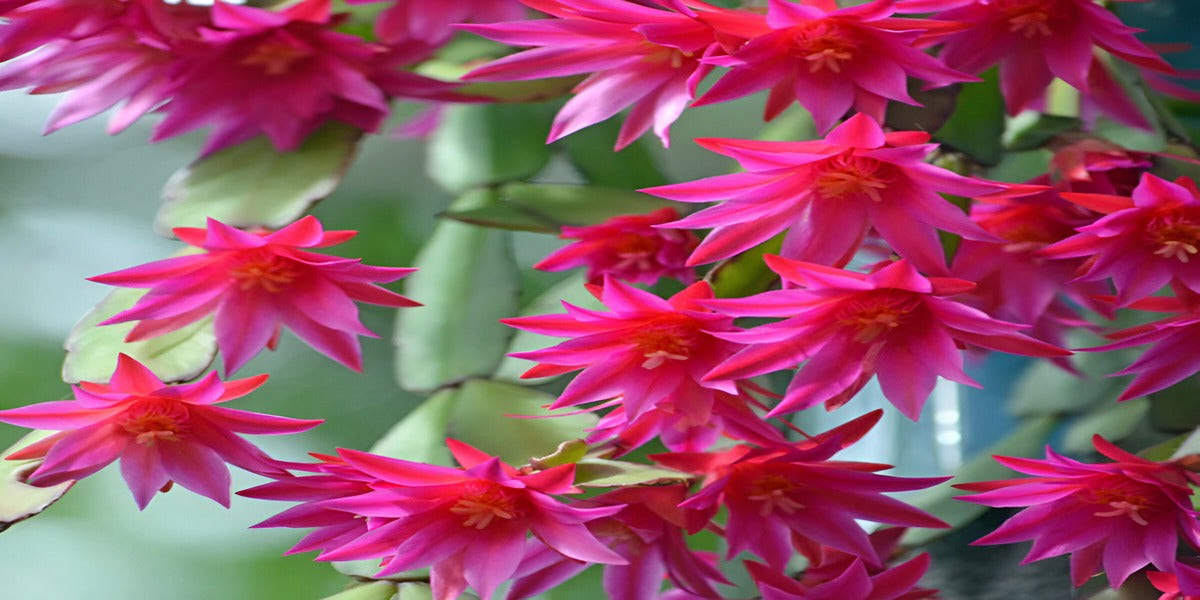
17. Conclusion
Overall, the Christmas cacti are fascinating and beautiful plants that bring joy and color to the holiday season. With their unique blooming patterns and care requirements, they require a little extra attention to thrive. By providing the right amount of light, water, temperature, and fertilizer, you can ensure your cactus stays healthy and vibrant.
Remember to give them a period of darkness to encourage blooming at the right time. Whether you have a Christmas cactus or a Thanksgiving cactus, these plants can be a delightful addition to your home. Explore more insightful articles and reliable resources at CARS.EDU.VN to enhance your understanding and enjoyment of automotive care. For any inquiries, please visit us at 456 Auto Drive, Anytown, CA 90210, United States. Contact us via Whatsapp: +1 555-123-4567. Visit our website at CARS.EDU.VN for detailed service information.
Frequently Asked Questions
How to Care for Christmas Cactus?
To care for a Christmas cactus is pretty easy. Just make sure it gets bright, indirect light and keep it in a room with temperatures between 60-70°F. Water it when the top 2 inches of soil feels dry, but don’t overdo it. During spring just after flowering, feed it with a balanced houseplant fertilizer once a year.
To encourage blooming, give it a cool period of around 50-55°F for 6-8 weeks in the fall. And if it gets too leggy, feel free to prune it back after flowering.
When should you put a Christmas cactus in the Dark?
You should put a Christmas cactus in the dark for about 6-8 weeks in the fall. This cool period, with temperatures around 50-55°F, helps initiate bud formation and encourages blooming.
Do Christmas cactus always bloom?
Christmas cacti have the wonderful ability to bloom not just during the holiday season, but also in spring if they’re given the right conditions, like shorter days. So, you can enjoy their beautiful blooms twice a year if you provide them with the proper care they need.
What is the secret of a Christmas cactus bloom?
The secret to a Christmas cactus bloom lies in providing the right conditions and care. These cacti need a cool period of around 6-8 weeks with temperatures around 50-55°F in the fall to initiate bud formation. Additionally, they thrive in bright, indirect light and prefer slightly moist soil.
The combination of shorter days and cooler temperatures triggers your cactus to bloom.
Do Christmas cacti grow fast?
Christmas cacti generally have a moderate growth rate. They won’t grow super-fast like some other plants, but with proper care, they can gradually spread about 2 feet over time.
My Christmas Cactus is not blooming. What do I Do?
If your cactus isn’t blooming, there are a few things you can try. First, make sure it’s getting enough indirect light, as too much direct sunlight can prevent blooming. Additionally, ensure that you’re providing the right amount of water – Christmas cacti prefer slightly moist soil, but overwatering can hinder blooming. Finally, try giving your cactus a period of cooler temperatures (around 50-55°F) for a few weeks, as this can encourage blooming.
How to prune a Christmas Cactus?
To prune a Christmas cactus, you can simply pinch or snip off any overgrown or leggy stems. This will help maintain a more compact and bushy shape. You can also remove any dead or damaged parts of your holiday plant. Just be sure to use clean and sharp pruning shears or scissors to avoid damaging the plant. Pruning is best done after the blooming period, so you can enjoy a full and healthy cactus during the next holiday season!
Why Are the Leaves on My Schlumbergera bridgesii Limp?
There could be several reasons why the leaves on your Christmas cactus are limp. One possibility is that your cactus is not receiving enough water, causing dehydration and wilting. Another reason could be that the it is exposed to extreme temperatures or drafts, which can also lead to limp leaves.
Why are the tips of the outer leaves of Christmas cactus red?
The tips of the outer leaves of a Christmas cactus may turn red due to environmental stress or natural adaptations. Excessive exposure to direct sunlight can trigger the production of anthocyanins, pigments that give the red hue as a protective response. Nutrient deficiencies, particularly in phosphorus or magnesium, can also cause discoloration.
Still struggling with your Christmas cactus care? Don’t worry! At CARS.EDU.VN, we’re here to help. Visit our website today to discover a wealth of information on plant care, troubleshooting tips, and expert advice tailored to your needs. Let cars.edu.vn be your trusted resource for all things plants!